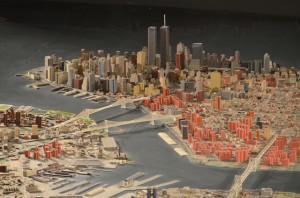 On a recent trip to New York City, I visited the biyali shop that my mother went to when she was growing up in NYC. Kosar’s was a nondescript place, just a slim counter to eat at, a refrigerated container with sodas and cream cheese, and the prized possessions, bialy, pletzels and bagels, stashed almost haphazardly behind the counter. The bialys certainly did not disappoint and the experience of being somewhere significant to mother’s youth was thrilling. Next door to Kosar’s, however, is a very descript donut shop, selling random varieties of donuts as well as pour-over coffee. The juxtaposition of the two was striking and made me wonder, are we creating places that we’ll take our children to? Are we creating places that will produce memories or are we building merely fads?
On a recent trip to New York City, I visited the biyali shop that my mother went to when she was growing up in NYC. Kosar’s was a nondescript place, just a slim counter to eat at, a refrigerated container with sodas and cream cheese, and the prized possessions, bialy, pletzels and bagels, stashed almost haphazardly behind the counter. The bialys certainly did not disappoint and the experience of being somewhere significant to mother’s youth was thrilling. Next door to Kosar’s, however, is a very descript donut shop, selling random varieties of donuts as well as pour-over coffee. The juxtaposition of the two was striking and made me wonder, are we creating places that we’ll take our children to? Are we creating places that will produce memories or are we building merely fads?
In pursuit of sustainability, communities across the country are starting to build compact, mixed use destinations. These places are great because they promote walking and encourage social engagement; in and of themselves they are beneficial to communities and encourage behaviors that promote sustainability. However, the places that fill them are often of the same character, of the high-profile donut variety, if you will. These businesses, more often than not, represent the fad of the moment.
Don’t get me wrong, there’s nothing wrong with good donuts– I had to stop myself from buying a dozen despite already having a dozen bialys in my hand– but whereas Kosar’s is an institution, born from a culture and filled with history, the donut shop is just the next best thing. Culture and history obviously take time to cultivate, but perhaps there’s a lesson to be learned here–that we should be thinking about the potential legacy of the places we’re creating– the people displaced, the impact on the environment, the potential health outcomes– before we, oh so eagerly, break ground.

